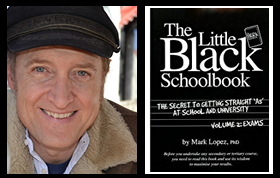Dr Mark’s The Meaning in a Nutshell
Stephen Maxwell Johnson (director), Chris Anastassiades (writer) High Ground (2020)
The film High Ground (2020) directed by Stephen Maxwell Johnson and written by Chris Anastassiades, is set in remote Arnhem Land in the Northern Territory in 1919. It deals with race relations between the Aborigines (specifically the Yolgnu people) and whites from a post-colonial, revisionist perspective that puts racism at the centre of Australian history, depicting frontier wars, massacres, and heroic Aboriginal resistance in the face of overwhelming odds. Tribal Aboriginal communities are presented as viable, living in tune with nature, until this harmonious existence was ruined by the advent of British/Western civilisation. The filmmakers put the view that frontier warfare and massacres represent the hidden ‘truth’ about Australian history. The filmmakers also put the view that Australian history represents lost opportunities for blacks and whites to live peaceably with mutual respect.
The film celebrates the Aborigines who resist and the few white people who support them in their resistance. It also condemns those whites who oppress Aborigines or do nothing to help them. The film also condemns those few Aborigines who betray their people and side with the oppressive whites.
The film presents itself as showing the dark side of Australian history, of British colonialism, the British Empire, and Western civilisation, all of which are tainted by racism, violence, oppression and exploitation. And since the British monarchy presided over this, it is tainted as well. The filmmakers saw themselves as confronting Australians with what they believe is a ‘truth’ that they were uncomfortable with, or unwilling to face. The establishment of British/Western civilisation in Australia is not depicted as a great achievement, but rather as tainted by its brutal origins, being the product of ‘bad men’ who did ‘bad things’ to clear the way for the others who follow.
The film features a clash between ancient and traditional Aboriginal law and the British/Australian law imposed by the colonial and Commonwealth authorities. The Aborigines in the film believe that their laws continue to apply to themselves, despite colonisation, while the colonial and Commonwealth authorities assert that there is only one law, and it is British/Australian law, which negates Aboriginal law. In addition, while the colonial and Commonwealth authorities in the film imply that British/Australian law is fair and universal, it is shown to be unfair in practice. In addition, the Aborigines are depicted as believing that the white people are encroaching on their land, and that they are entitled to resist this encroachment.
In this context, the filmmakers present traditional tribal Aboriginal communities as viable and as living in tune with the natural environment to convey the message that Aboriginal people should be allowed to continue with their traditional way of life, not just when the film was set, in the early twentieth century, but, by implication, when the film was released, in the early twenty-first century and beyond. Aboriginal culture is presented as rich and fulfilling. Aboriginal families are presented as viable, loving and supportive. Aboriginal communities live off the land in traditional ways that are effective and satisfying. Traditional Aboriginal tribal culture is shown to be passed from the old to the young, which is how it has survived for many thousands of years and continues to survive.
The film is also an adaptation of the genre of the American Western to an Australian context, or, more precisely, it adapts a subgenre of the Western known as the revisionist Western. The revisionist Western challenged the mythology of the traditional Western, subverting its traditional clear-cut distinctions between good and evil favouring the cavalry and white settlers over the natives, to present, for example, the Indians as the good guys heroically defending their tribal lands from the brutal cavalry and inconsiderate white settlers who disrespect and despoil the landscape that the Indians require to preserve their traditional way of life. This film, set in Australia, depicts the lawmen and farmers who promote Western civilisation as (with few exceptions) the bad guys and the natives as the good guys who heroically resist the white police and settlers who encroach upon their lands, disrespect their tribal law, and use massacres as a form of pacification. The filmmakers, being true to the genre of the Western, or revisionist Western, also sought to entertain, presenting in High Ground plenty of thrilling action and moral drama involving a struggle between good and evil played out on the frontier.
Student resources by Dr Mark Lopez
© Mark Lopez 2023 All RIGHTS RESERVED
The purpose of the concise notes of Dr Mark’s The Meaning in a Nutshell is to provide much needed help to students seeking to unlock the meaning of the texts with which they have to deal. (More elaborate notes are provided in lessons as part of my private tutoring business.)
Subject: High Ground meaning, High Ground themes, High Ground analysis, High Ground notes
